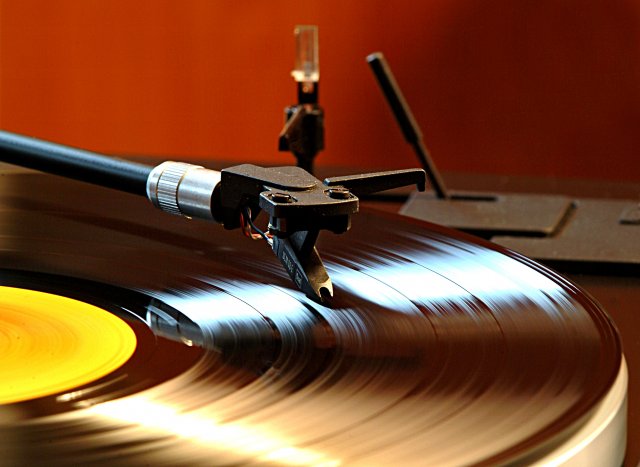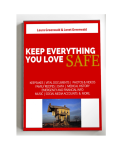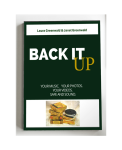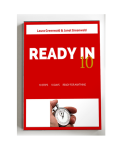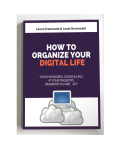Updated 3/7/21
How To Back Up Your Parent’s Printed Photos
I don’t know about you, but the worst part about watching coverage of earthquakes — like the quakes in Ecuador and Japan — is the look on victim’s faces as they pick through the rubble of their homes, trying to find a photo of their wedding or of their children.
In today’s world, now that we have smartphones, taking photos has become a daily event. If one gets harmed or destroyed, we just print out another copy. Not true though for old family photos that are hanging on the wall, or worse, stuck like glue inside a yellowed photo album.
And where will you find most of those old photos? At your parent’s and grandparent’s house — where unfortunately one-of-a-kind can mean just that. One copy and that’s it! What a horrible thing it would be for them or for you to be left without the pictures you treasure the most, especially when keeping them safe and sound is so easy.
So give this post a quick read, grab the tools you need for the job and let’s get Mom and Dad’s photos and cameras squared away once and for all!
As you know, there are two types of photos. The first are photo prints – basically anything that is a physical photo, whether it’s in a frame, in an album or lurking in the back of a kitchen or desk drawer. In order to archive those photos, you’ll need to scan them and get them into a digital format so that they can be put on a computer or portable hard drive. That’s what we’ll be dealing with in this article. The second type of photo is a digital photo – which we help you back up and archive in another post.
One thing that makes print photos harder to archive than other keepsakes is the simple fact that we get so used to seeing our favorite photos hanging around the house, that we don’t always think to take them off the wall and scan them for safekeeping.
So your first task is to locate all of your parent’s physical photos. Don’t forget to look for all the albums, photos in drawers or files and those hanging in frames on the walls or sitting on the bookshelf. Then you’ll decide which of those photos you want to archive for safekeeping. After that, we’ll get them scanned.
If there are a lot of photos around the house, you’ll probably need some help dealing with all of your pictures. Why not declare one day “scanning day”. Invite a bunch of good friends over to help, and if you have as much fun as we think you will, next time have them bring over their own photos to scan. Do you have kids? That’s even better – they’ll have a great time helping.
1. Grab a pencil and paper
…and go around the house jotting down all the non-digital photos or photo collections you want to secure and their current location.
2. Gather all of the photos that you located.
Although all of your photos are important, some mean more to your parents than others.
Take a few moments to look at the photo albums, prints and framed photos and separate them into two different piles.
-
In the first pile, place photos that you want to copy and save in a digital format, for safekeeping.
-
In the second pile, place photos that you:
-
Already have in digital format and could easily recopy if the one you’re holding was harmed or destroyed.
-
Have numerous other copies of the photo in other locations. Check to make sure that this is actually true, before you decide not to scan them.
-
Simply don’t care enough about to keep it disaster safe.
-
-
You can go ahead and put the photos in the second pile back where you found them.
3. Scan Away!
Take the photos in the first pile, scan each one and download it to your computer, placing them in a brand new folder. When you’re finished, make one copy of that complete folder. Place the original folder in with the other digital photos on your computer. Then place the copy of the folder into the backup folder you created earlier.
If you already have digital photos on your computer, save these scanned photos to a new folder within your photos folder. For example, ScannedPrintPhotos, so you’ll know at a glance which photos are the ones you scanned.
4. Make Sure You Back Up ALL Your Photos To At Least Three Locations
Once you have finished scanning, copy that folder containing all of your photos — the digital ones and the ones you just scanned and save it with a different name, like Photo Archive Backup, with today’s date. Place a copy of your backup folder in at least three different locations. Here are a few suggestions of safe places to store them:
•On a flash drive or portable hard drive, and take them with you during evacuation on a key ring or in your plastic evacuation bin.
•On a flash drive or portable hard drive, in a safe deposit box or water/fireproof safe in your own city.
•On a flash drive or portable hard drive, in a safe deposit box, water/fireproof safe, or with relatives in the city where you’ll be evacuating.
•In a password-protected online file repository or on the file directory of your family’s personal web site. This way, you can retrieve them from any Internet-enabled computer.
•You can also save an extra copy of your photos on Flickr or another internet photo service. But this really shouldn’t be your long-term solution or only solution, since you have no control over these sites and could lose all of your data without any warning.
•If you really want to keep photos on a secure site that you can share with your family, try iMemories.com. Not only do they have great servers with outstanding redundant backup capability, but they can even put your photos on DVD for you, providing an extra layer of safety.
If you need more help scanning your photos — or if you have delicate or color challenged photos that need a bit more attention, here are a few tips.
How To Scan Your Photos
There are several great ways to scan your photos. Just to clarify, a scanner is different than a copy machine, because a scanner makes an exact digital copy of a photo. It’s a world of difference from a photo copy, which is usually pretty bad. In many cases a scan of a photo is better than the original. And the nice thing about them is that once you scan a photo, you can save it onto your computer, share it with family and friends or use photo software to correct faded color, repair damage or otherwise restore old photographs.
Most printers available now are three or four in one printers, that scan as well as print. You can also scan your photos with a dedicated flatbed scanner (all it does is scan).
Or you can scan your photos with a portable wand scanner, as we mentioned earlier. Portable wand scanners, like the VuPoint Wand Scanner, have come a long way. They run on batteries or are rechargeable and save anything you scan onto an SD card. From there, you can download the scans/photos directly to your computer, via a USB cord, or you can pop the SD card out of the scanner and pop it into your computer to archive your scans.
The best part about having a portable wand scanner is that you can scan photos, documents, even things like marriage certificates or historical documents by swiping the scanner over it, instead of having to take all of those documents home and putting them, one at a time, through your scanner. It’s especially good, like we said, for scanning photos at relative’s homes. If they don’t want the photo leaving the house, just take the scanner over and scan the photos you want. Amazingly, if you’re dealing with a fragile photo, you can even scan it right in the frame. Or if you have delicate photos in a photo album – have you ever tried to peel photos out of an album without damaging them – you can simply open the book and sweep the scanner over the page. Then all you have to do is open the scanned page and crop the photos apart, saving each one as a separate photo. Photos archived, originals safeguarded!
One other scanner we wanted to mention is one that stands out among all the others in the marketplace, for color correction. It’s the Epson Perfection line of scanners, with Epson’s Easy Photo Fix software. There are several models on Amazon.com. Do you have any of those photos from the seventies and eighties that ended up a muddled brown-orange mess? All you have to do is use the Auto Fix setting on the scanner and then scan your seventies photos. The scanner corrects the color while it scans. Truly amazing!
If you don’t have access to a scanner, then have a relative or friend scan them for you. Scanning is by far the cheapest and most effective way of safeguarding your important photos. If you can’t get them scanned, go to a copy shop like Fed Ex-Kinko’s and have copies made of all your photos, using non-acid paper. This will ensure that they will last longer and will fade less as they age.
Now that you know what you’re doing, scan all the loose prints that you want to preserve. The higher the dpi the better the quality, so use 300 or 600 on your oldest, most treasured photos. Then save the scans to your computer to back them up.
Have Fun Getting Your Stuff Together!
Back It Up
 I don’t know about you, but the most important keepsakes in our house are our old family photos, followed closely by our home movies and music. But grabbing piles of photo albums and all your picture frames off the walls is pretty hard to do when you’re running out the door! With Back It Up, you’ll learn quick, easy steps to back up your print/digital photos, home movies, music (including vinyl & cassettes) and save them in multiple, disaster proof locations. Paperback Or Instant Download
I don’t know about you, but the most important keepsakes in our house are our old family photos, followed closely by our home movies and music. But grabbing piles of photo albums and all your picture frames off the walls is pretty hard to do when you’re running out the door! With Back It Up, you’ll learn quick, easy steps to back up your print/digital photos, home movies, music (including vinyl & cassettes) and save them in multiple, disaster proof locations. Paperback Or Instant Download
Keep Everything You Love Safe | The Book Inspired By The Blog
 Keep Everything You Love Safe, is filled with quick, easy, 5 minute steps you can take right now, to get everything that’s important to you organized, safe, sound and accessible. Each section covers a different area, from backing up and fixing family photos, home movies and music, to vital documents, medical and financial information and even getting your digital life in order. Paperback Or Instant Download
Keep Everything You Love Safe, is filled with quick, easy, 5 minute steps you can take right now, to get everything that’s important to you organized, safe, sound and accessible. Each section covers a different area, from backing up and fixing family photos, home movies and music, to vital documents, medical and financial information and even getting your digital life in order. Paperback Or Instant Download
Keep The Stuff You Love Safe




